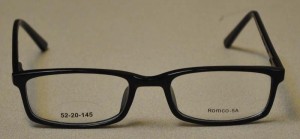National Defense has an important analysis of where the US Army exactly stands in the era of Obama. They need to redefine their strategy in keeping with Obama’s plans to redirect its mission toward a greater focus on Asia. If you want further evidence that the US Army is becoming less of a fighting force and more of a government agency that delivers goods and services, just listen to the internal debate going on among the military brass on defining the US Army’s strategic mission:
The Navy and the Air Force already have a nifty concept, called “air-sea battle,” for how they view the future. For the Army, coming up with a concise definition of what its job will be post Iraq and Afghanistan is proving to be an uphill battle.
During a meeting with a team of strategic planners this week, Army Chief of Staff Gen. Ray Odierno recognized that the Army’s role in providing security for the United States is too complex to be captured in a slick catchphrase. And yet the Army’s leaders find themselves under pressure to craft a credible narrative of how the service will align itself with a new Pentagon strategy that deemphasizes ground warfare and sets its sights on Asia. Adding to the sense of urgency are looming budget cuts, which could result in a smaller force and reduced funding for new weapon systems.
Army leaders believe that, unless the service can clearly explain to Congress, the American public and even its own ranks, what its mission will be after current conflicts end, it will risk not just losing financial resources but also the hard-won war-fighting skills that soldiers have acquired over the past decade.
This week Odierno unveiled his first attempt at articulating his vision for the future Army. In a document titled, “Marching Orders,” Odierno casts the Army as the force that can “prevent, shape and win” future conflicts.
The Army is involved in so many activities around the world these days that trying to condense its mission into a simple narrative might be unrealistic, says Lt. Gen. Keith C. Walker, director of the Army Capabilities Integration Center.
“It’s really messy,” Walker says.


COMMENTS
Please let us know if you're having issues with commenting.